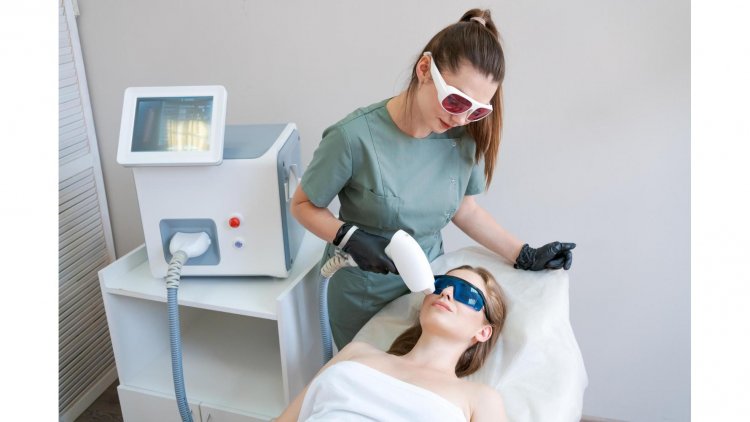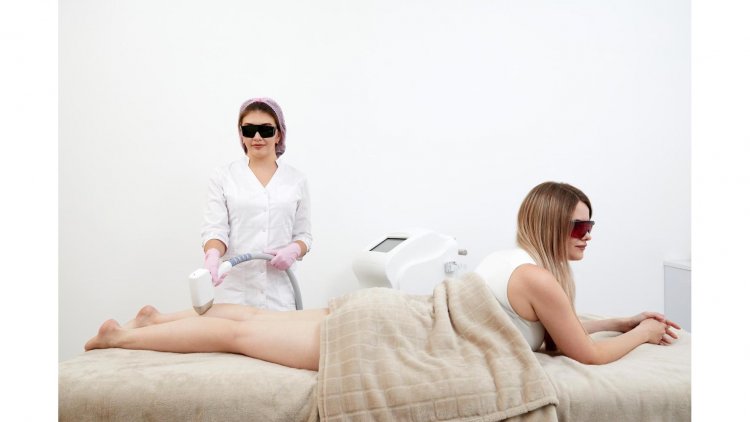The Ultimate Guide to Laser Hair Removal: Unveiling Its Hidden Truths
Laser hair removal has surged in popularity over the past few decades as a modern solution to the age-old problem of unwanted body hair. As the technology has evolved, so have the possibilities for effectively achieving smooth, hair-free skin. But before you dive into this cosmetic procedure, it’s essential to weigh the advantages and drawbacks to determine if it’s the right choice for you. This comprehensive review explores the various facets of laser hair removal, providing a detailed look at its benefits, potential downsides, and what you need to consider before making a decision.


The Bright Side: Benefits of Laser Hair Removal
Precision and Efficiency
One of the most lauded benefits of laser hair removal is its precision. Unlike traditional methods such as shaving or waxing, which often result in uneven hair removal and irritation, laser hair removal targets hair follicles with a focused beam of light. This technology allows for the effective removal of hair while preserving the surrounding skin.
The efficiency of the procedure is another significant advantage. Laser hair removal sessions are relatively quick, with many treatments lasting only a few minutes depending on the area being treated. Larger areas like the back or legs might take longer, but the time investment is generally less compared to the frequency and duration of other hair removal methods.
Long-Term Hair Reduction
Perhaps one of the most compelling reasons to opt for laser hair removal is its potential for long-term hair reduction. While not all individuals achieve permanent hair loss, many experience a significant decrease in hair growth. Over time, hair follicles are destroyed or become less active, leading to a reduction in hair density and the need for less frequent treatments.
Less Painful Than Traditional Methods
Compared to waxing or epilation, laser hair removal is often described as less painful. While individual pain tolerance varies, the sensation is usually likened to a rubber band snapping against the skin. Most modern laser systems incorporate cooling mechanisms to further minimize discomfort. For those who find waxing excruciating, laser hair removal can be a more tolerable alternative.
Minimal Downtime
Unlike invasive procedures that may require extended recovery periods, laser hair removal typically involves minimal downtime. Post-treatment effects are generally limited to minor redness or swelling, which usually subsides within a few hours. This makes it a convenient option for those with busy lifestyles who cannot afford prolonged recovery times.
Precision in Targeting
Laser hair removal excels in targeting specific areas without affecting the surrounding skin. This precision is particularly beneficial for sensitive areas such as the upper lip or bikini line, where other hair removal methods might cause irritation or injury. The technology is designed to hone in on the pigment within the hair follicle, sparing the skin and resulting in a more precise outcome.
The Other Side of the Coin: Drawbacks of Laser Hair Removal
Potential for Side Effects
While laser hair removal is generally considered safe, it’s not without potential side effects. Some individuals may experience temporary discomfort, including redness, swelling, or mild irritation. In rare cases, more serious side effects such as blistering, scarring, or changes in skin pigmentation can occur, particularly if the procedure is not performed correctly or if the individual has certain skin types.
Multiple Sessions Required
Achieving optimal results with laser hair removal typically requires multiple sessions. Hair grows in different phases, and lasers are most effective on hair in the active growth phase. This means that several treatments are needed to target all hair follicles effectively. Depending on the area and individual response, this can result in a substantial time and financial commitment.
Not Suitable for All Hair and Skin Types
Laser hair removal is most effective on individuals with light skin and dark hair. The contrast between skin and hair color allows the laser to target the melanin in the hair follicle more effectively. Those with darker skin tones or lighter hair may not experience the same level of effectiveness, and may require different types of lasers or alternative hair removal methods.
Risk of Hyperpigmentation
For individuals with darker skin, there is a risk of hyperpigmentation, where the treated area may become darker than the surrounding skin. This is more common with certain types of lasers and can be a concern for those prone to pigment changes. It’s essential to choose a qualified practitioner who can assess your skin type and select the appropriate laser to minimize this risk.
Cost Considerations
While laser hair removal can lead to long-term savings by reducing the need for ongoing hair removal products and services, the initial cost can be a barrier for some individuals. Each session typically involves a significant financial investment, and the total cost can add up when multiple treatments are necessary. Many people find that insurance does not cover cosmetic procedures, so it’s important to budget accordingly.
Navigating Your Decision
When considering laser hair removal, it’s crucial to weigh these pros and cons carefully. Understanding the full scope of the procedure, from the immediate benefits to the potential risks, can help you make an informed choice that aligns with your personal needs and expectations.
By consulting with a qualified professional and discussing your specific concerns, you can tailor your approach to achieve the best possible outcomes while minimizing potential downsides. Whether you’re seeking a more permanent solution to unwanted hair or exploring alternatives, being well-informed is key to making the right decision for your individual situation.
Stay tuned for the second half of this guide, where we delve deeper into how to prepare for your laser hair removal treatment and what to expect in terms of results and aftercare.
Preparing for Laser Hair Removal: What to Expect
Pre-Treatment Guidelines
Preparation is essential to ensure the effectiveness and safety of your laser hair removal treatment. Here’s what you should do before your appointment:
- Avoid Sun Exposure: It's crucial to protect your skin from sun exposure for at least two weeks before your treatment. Sunburned or tanned skin can increase the risk of side effects and make the procedure less effective. If sun exposure is unavoidable, use a high SPF sunscreen to protect your skin.
- Shave the Treatment Area: For best results, shave the area you plan to treat a day or two before your appointment. This helps ensure that the laser targets the hair follicles effectively. Avoid waxing or plucking, as these methods remove the hair from the root, which the laser needs to target.
- Avoid Certain Medications: Some medications can increase your sensitivity to light or affect your skin’s response to the laser. Inform your practitioner of any medications or supplements you are taking, and follow their advice on which medications to avoid before your treatment.
- Consult with Your Practitioner: During your consultation, your practitioner will assess your skin type, hair color, and overall suitability for laser hair removal. They will also discuss your medical history and any potential risks associated with the procedure.
What to Expect During Your Session
Laser hair removal sessions are generally straightforward, but understanding what to expect can help alleviate any concerns:
- Preparation: When you arrive for your session, the treatment area will be cleaned, and you may be given protective eyewear to shield your eyes from the laser light.
- Laser Application: The practitioner will use a hand-held laser device to target the hair follicles. Depending on the area and the type of laser used, you may feel a sensation similar to a rubber band snapping against your skin. The procedure can last anywhere from a few minutes to over an hour.
- Cooling Measures: Many modern laser systems include cooling features to reduce discomfort and protect your skin. You might also receive a cooling gel or have a cooling device applied to the treatment area.
- Immediate Aftercare: After the session, you may experience mild redness or swelling in the treated area. These effects typically resolve within a few hours. You might be advised to apply soothing lotions or aloe vera to ease any discomfort.
Post-Treatment Care: Ensuring Optimal Results
Following Up After Treatment
Proper aftercare is crucial for achieving the best results and minimizing side effects. Here’s what you should do after your laser hair removal session:
- Avoid Hot Showers and Saunas: For the first 24 to 48 hours, avoid hot showers, saunas, or anything that might irritate the treated area. Opt for cool or lukewarm showers instead to prevent exacerbating any redness or swelling.
- Apply Sunscreen: Protect your skin from sun exposure by applying a broad-spectrum sunscreen with a high SPF. This helps prevent hyperpigmentation and ensures the skin heals properly.
- Avoid Exfoliating: Refrain from using exfoliants, scrubs, or any abrasive products on the treated area for at least a week. This helps avoid irritation and allows the skin to recover.
- Follow Up Appointments: Adhere to the treatment schedule recommended by your practitioner. Completing the full course of sessions is crucial for achieving long-term hair reduction.
Managing Side Effects
While laser hair removal is generally safe, it’s important to be aware of potential side effects and how to manage them:
- Redness and Swelling: These are common and usually subside within a few hours. Applying a cold compress or aloe vera gel can help soothe the area.
- Blistering or Scarring: Although rare, blistering or scarring can occur. If you experience these symptoms, contact your practitioner immediately for guidance on appropriate treatment.
- Pigmentation Changes: In some cases, changes in skin pigmentation may occur. These can be temporary but should be monitored. Consult with your practitioner if you notice any significant changes.
Long-Term Considerations
Laser hair removal can provide significant and lasting results, but it’s important to have realistic expectations:
- Hair Growth Cycles: Since hair grows in different phases, you may require multiple sessions to achieve the desired results. Patience and adherence to the treatment plan are essential.
- Maintenance Sessions: Some individuals may require occasional maintenance sessions to address any remaining hair growth. Discuss the need for ongoing treatments with your practitioner.
- Individual Variability: Results can vary based on factors such as skin type, hair color, and hormonal changes. Your practitioner can help set realistic expectations based on your individual characteristics.
The Verdict: Is Laser Hair Removal Right for You?
Laser hair removal offers a range of benefits, from long-term hair reduction to minimal downtime. However, it’s essential to consider both the advantages and potential drawbacks before making a decision. Factors such as skin type, hair color, and budget can all influence the suitability and effectiveness of the procedure for you.
If you’re seeking a more permanent solution to unwanted hair and are willing to commit to multiple sessions, laser hair removal could be a worthwhile investment. Consulting with a certified and experienced practitioner will provide you with personalized advice and help you navigate the process with confidence.
By understanding both the positive aspects and the challenges associated with laser hair removal, you can make an informed choice that aligns with your needs and expectations. Whether you’re looking to simplify your hair removal routine or achieve smoother skin, being well-prepared is key to achieving the best possible outcomes.
Disclaimer: The information provided in this article is for educational purposes only and should not be considered medical advice. If you have any health concerns or are experiencing symptoms, it is important to consult with a healthcare professional, such as a doctor or clinic, for proper diagnosis and treatment. Always seek the advice of your doctor or other qualified health provider with any questions you may have regarding a medical condition. Do not disregard professional medical advice or delay in seeking it because of something you have read in this article.
What's Your Reaction?





















